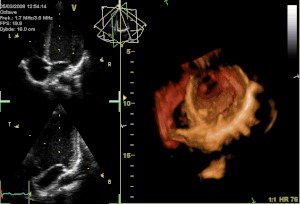Today, My friend shared with me an awesome site related to Biomedical Imaging technique where you can learn the role of the physics in Medicine, That is the various Medical Imaging Modalities which are around us.
This site works in an interactive manner and you can understand the various modalities clinical application by few clicks . It will help in making the applications crystal clear in your mind
 You CAN LEARN
You CAN LEARN
- MRI scans
- Colonoscopy
- PET SCANS
- Radiotherapy
This will help you in developing a interest in the field of Medical Imaging.
This is a preview of Inside story: Physics in Medicine(Awesome Learning Website in Medical Imaging).
Read the full post (144 words, 2 images, estimated 35 secs reading time)
Ridley’s implantation (1949) of the first intraocular lens (IOL) marked the beginning of a major change in the practice of ophthalmology. The IOLs are microlenses placed inside the human eye to correct cataracts, nearsightedness, farsightedness, astigmatism, or presbyopia. There are two types of IOLs: anterior chamber lenses,which are placed in the anterior chamber of the eye between the iris and the cornea, and posterior chamber IOLs, which are placed in the posterior chamber behind the iris and rest against the capsular bag. Procedures for implanting the IOLs and technologies for manufacturing them in various sizes, thicknesses, and forms as well as with various materials progressed tremendously in the last decade. Multifocal IOLs are one of the important signs of this progress. While monofocal IOLs, the most commonlyused, are designed to provide clear vision at one focal distance, the design of multiple optic (multifocal) IOLs aims to allow good vision at a range of distances.

Image via Wikipedia
Just now out in the press is the news that
CEA-Leti and five partners are combining their expertise to develop a self-powered cardiac pacemaker eight times smaller than current models.
The Heart-Beat Scavenger (HBS) Consortium, which also includes the Sorin Group, TIMA, Cedrat Technologies, Tronics and EASII IC, is targeting an energy self-sufficient device that harvests mechanical energy from the movements of the heart, eliminating the need for batteries and post-implant surgeries to replace them.
A longer-term goal of the project is to reduce healthcare expenditures. Heart failure represents one of the biggest public-health costs today in Europe and the United States.
This is a preview of New Miniaturised Self powered Pacemaker to be built.
Read the full post (232 words, 2 images, estimated 56 secs reading time)






